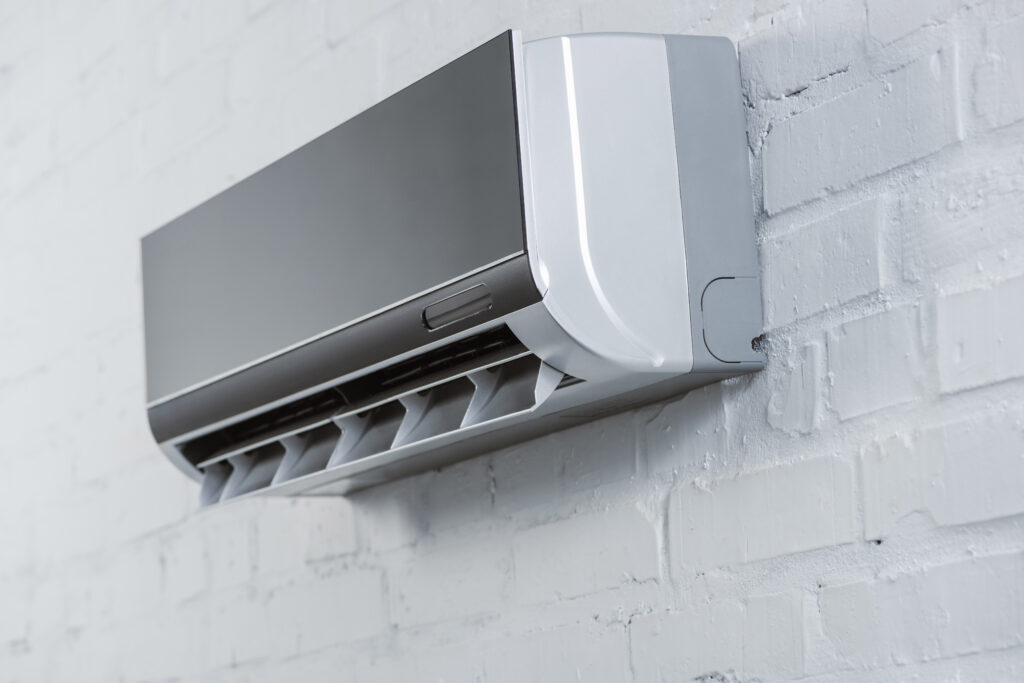When planning your new residential construction project, the choice of heating systems might seem overwhelming. There are several options available, each with its unique advantages and drawbacks, so selecting the most suitable system is crucial. Baker Air Conditioning & Heating recommends considering the increasingly popular heating solution for residential new construction: the ductless heating system. Thanks to its energy efficiency, flexible installation options, and the ability to directly target heating zones throughout the house, it stands out as an excellent choice.
Ductless heating, also known as mini-split heating systems, uses individual air handlers placed throughout your home, connected to an external condenser unit. These systems do not require ductwork, meaning they can be installed in various layouts and configurations. Baker Air Conditioning & Heating points out that this adaptability makes ductless heating systems especially appealing for many new construction projects, especially those focused on creating more sustainable and efficient living spaces.
The benefits of these systems, as highlighted by Baker Air Conditioning & Heating, go beyond just their adaptability. Ductless heating systems are known for their high energy efficiency, as they waste less energy compared to traditional forced-air systems requiring ducts. This efficiency leads to lower energy bills, reduced environmental impact, and a more comfortable living environment for homeowners, aligning with Baker Air Conditioning & Heating’s commitment to offering sustainable and efficient heating solutions.
Energy Efficiency and Lower Operating Costs
One of the main reasons homeowners choose ductless heating systems for their new construction projects is their impressive energy efficiency. Traditional forced-air systems often lose energy through leaks and heat loss in the ductwork, resulting in higher energy consumption and increased energy bills. Ductless systems, on the other hand, avoid these issues by directly transferring heat from the outside unit to the indoor air handlers.
This direct transfer of heat reduces the amount of energy wasted and provides homeowners with significant cost savings on their monthly energy bills. Additionally, the zoning capabilities of ductless systems allow homeowners to control the temperature in each room independently. This feature makes it easier to avoid heating unoccupied rooms, further increasing a home’s overall energy efficiency.
Flexible Installation Options
Ductless heating systems are known for their flexible installation options, making them an ideal choice for new residential construction projects. These systems consist of an outdoor condenser unit connected to multiple indoor air handlers via small refrigerant lines. With no need for extensive ductwork, ductless systems can be installed in various locations throughout your home.
This flexibility is especially beneficial for homeowners looking to build unique or unconventional layouts where traditional ductwork might not be feasible. Ductless systems can be installed in multi-story homes, open-concept layouts, or even in homes with limited attic or crawlspace access. Homeowners can work closely with our professionals to determine the optimal placement of indoor units to maximize comfort and efficiency.
Improved Indoor Air Quality
Traditional forced-air heating systems rely on a network of ducts to distribute conditioned air throughout your home. Over time, dust, allergens, and other pollutants can accumulate inside these ducts, reducing the overall air quality inside your home. Ductless heating systems, however, eliminate the need for ductwork, thus avoiding the possibility of contaminants building up and getting circulated throughout the living space.
Many ductless systems also come equipped with air filtration and purification technologies that help keep your indoor air clean and fresh. These filters can capture and remove allergens, dust, odors, and other pollutants from the air before it is circulated into your home. By improving indoor air quality, ductless heating systems contribute to a healthier and more comfortable living environment.
Zoning Capability for Customized Comfort
One feature that sets ductless heating systems apart from other options is their ability to target specific areas or “zones” within your home. Each indoor air handler can be individually controlled, allowing you to adjust the temperature settings in each room or zone separately. This zoning capability means you can create customizable comfort levels throughout your home and better accommodate the needs of each family member.
In addition to providing personalized comfort, zoning capability also contributes to the overall energy efficiency of your home. By allowing you to heat only the rooms you’re using and maintain lower temperatures in unoccupied areas, ductless systems can help you save on energy consumption and reduce your environmental impact.
Conclusion
As residential new construction continues to evolve to meet the demands of modern-day living, innovative solutions like ductless heating systems are becoming increasingly popular. With their energy efficiency, flexible installation options, improved indoor air quality, and zoning capability, ductless heating systems are well-suited to accommodate various home designs and layouts.
If you’re considering a ductless heating system for your new residential construction project, our qualified team at Baker Air Conditioning & Heating is here to help you make the best decision for your family’s needs. As specialists in heating solutions for residential new construction, we have the expertise and knowledge to guide you through the process, ensuring you get the most out of your ductless heating system. Contact us today to learn more and set up a consultation to discuss the heating options available for your new home.







